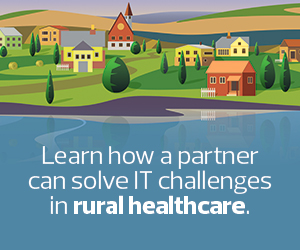What Does the REH Designation Mean for Rural Healthcare?
In 2023, the Centers for Medicare & Medicaid Services introduced the REH designation, which aimed to transform capabilities of qualifying healthcare organizations. The designation allows eligible hospitals to expand up to 50 beds and provide emergency services, observation care and additional outpatient services.
This new designation was created in response to rural hospital closures and is intended to expand access to care in rural communities by supporting independent and community hospitals financially.
After the 2020 census, the minimum population threshold qualification for an area to be considered urban was raised from 2,500 to 5,000. As a result, the percentage of the national population considered rural increased from 19.3 percent in 2010 to 20 percent in 2020. The size of rural communities is increasing, and more than 1,100 communities that were previously considered “urban” were recently redefined as “rural.” Those organizations, as well as hospitals in existing rural areas, can apply for the REH designation.
An organization currently classified as a Critical Access Hospital with high bed utilization rates is particularly well positioned to take advantage of the opportunity to transition to REH status. A CAH is limited to 25 beds. Seeking the REH designation means a CAH can double its capacity without losing federal dollars. In addition, each REH received $272,866 per month in 2023, with payments expected to increase in subsequent years, according to the CMS final rule.
An REH is subject to the same regulations as a CAH, so regulatory barriers shouldn’t be an issue for conversion to REH status. However, it’s important that rural, independent and community hospitals contemplating this move consider how the change in capacity and funding impacts their organization’s financial goals. Organizations also need to be prepared for the strategic resource allocation required for the transition, including financial resources, staffing and infrastructure enhancements.
EXPLORE: Here are three ways for independent hospitals to achieve cost containment.
How a Partner Can Help Rural Hospitals Achieve REH Status
A technology partner such as CDW can help rural healthcare organizations navigate the transition to the REH designation. CDW has a team of 18 healthcare strategists who are all former CIOs, CTOs and CISOs at healthcare organizations. They spent the first part of their careers walking hospital halls, and about half of them worked at a rural, independent or community hospital at some point in their career. They can offer firsthand experience with the challenges on the ground at these organizations.
An experienced technology partner can play a consultative role in helping customers assess their current state and map to the desired state while maintaining regulatory compliance. CDW can help organizations evaluate and enhance their IT infrastructure to support expanded services. If an organization decides to expand its virtual care solutions as a result of the REH designation, CDW can also help implement remote patient monitoring solutions to increase early detection and increase efficiency.
CDW can also support healthcare organizations with IT and clinical staffing. We can help rural, independent and community hospitals identify their recruiting radius and facilitate clinical staffing through our partner network. Organizations can also partner with CDW for assistance with:
- Flexible staffing solutions such as block retainers and ad hoc statements of work
- Employee training to improve retention and help employees gain new skills
- Managed services, such as network monitoring, to reduce the burden on in-house IT staff and reduce labor costs
In addition, CDW’s public sector funding strategists can help organizations secure federal funding for hospital expansions or IT investments. Strategists sit down with the organization’s leaders to understand the desired state and then research federal grants to help fund those projects. We can also recommend grant writers and consultants to assist with the application process.
Rural, independent and community hospitals don’t have to navigate the transition to a REH designation alone. CDW can help rural healthcare organizations understand their needs and procure the funding necessary to achieve their goals.
This article is part of HealthTech’s MonITor blog series.












